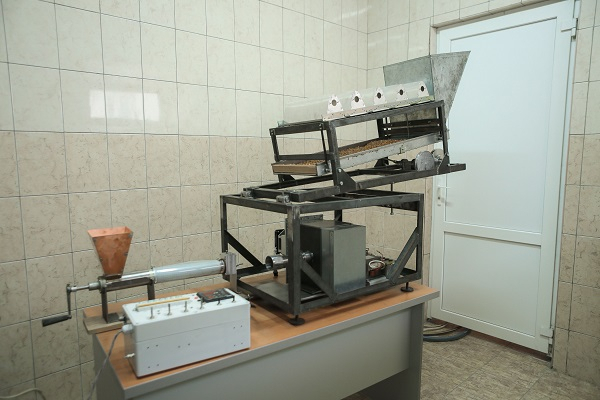
Employees of the Engineering Center of Instrument-making, radio-and Microelectronics of the National Research Laboratory Modeling and Control Systems of the Southern Federal University (Taganrog) within the framework of the project supported in the competitive selection by the Decree of the Government of the Russian Federation No. 218, developed models of the first units of the plant processing plant seeds. This equipment sorts, decontaminates and increases their germination rate.
The industrial partner is JSC "Taganrog Research Institute of Communications", a member of CRET (Concern Radio-electronic Technologies).
Engineers of the Southern Federal University are creating a complex that processes grains (seeds) in order to increase their germination and improve yield. The capacity of the complex is 3 tons of grain per hour, or 50 kg per minute. The device is designed for mass production. Scientists emphasize that the performance of the complex can be scaled.
All blocks and components are developed by the Engineering Center of Instrumentation, Radio and Microelectronics of the National Research Laboratory Modeling and Control Systems of the Southern Federal University in Taganrog. Subsequently, they will be transferred to serial production to the industrial partner and customer of the project - JSC "Taganrog Research Institute of Communications", which is part of CRET (Concern Radioelectronic Technologies).

The grain processing complex consists of several nodes, the first of which is a photoseparator developed by engineers, which allows you to sift out good seeds using neural network algorithms. The neural network analyzes images of each grain in the stream on the fly. As a result, a decision is made whether the grain is good or bad, and it is sorted. The selection takes into account: shape, color, the presence of chips (integrity) and dark spots, and it is also possible to filter out foreign impurities in the form of pebbles, which are unable to filter out a conventional sieve.
The design novelty of the photoseparator is the absence of a compressor. Instead, acoustic waves are used – high-speed devices push bad grains out of the general flow with a stream of compressed air. The absence of a compressor makes the installation more compact, reliable and reduces the cost of the entire processing process.
After photoseparation, a decontamination unit follows, where the grains are treated with anolyte-water with NaCl salt dissolved in it, through which an electric current was passed. This allows you to additionally moisten the surface of the grains. In the next block of the complex, the seeds are treated with microwave radiation: the grain flow is passed through a chamber with 14 magnetrons.
Wheat grains were used in the tests, but the developers emphasize that their equipment can adapt to any type of crop – just train the neural network.
The installation is currently under development, and engineers have already created mock-ups of some of its components.
Short link to this page sfedu.ru/news/65703




